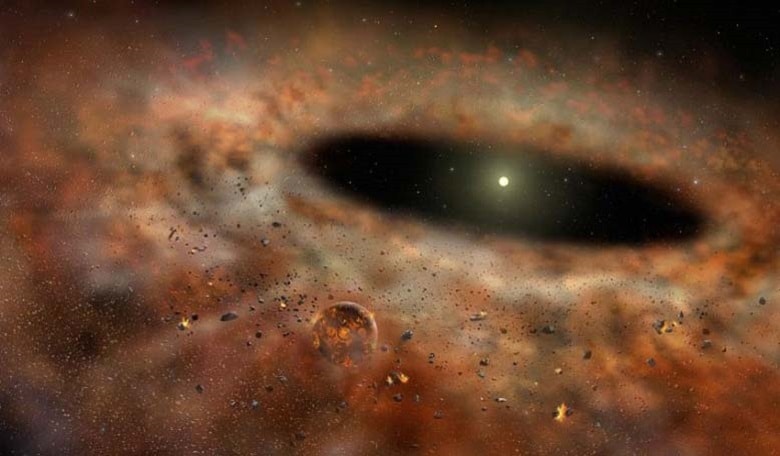Researchers at the Lund Observatory in Sweden, have been analysing the water-to-silicate ratio of the micrometre-sized dust grains found in protoplanetary discs to determine how this ratio influences the disc structure and with it the migration and formation pattern of planetary cores in those discs.
Understanding how our Solar System formed and others like it across the Galaxy is of great interest to astronomers, as it can give some indication as to just how prevalent planets such as Earth are. However it is also useful to know if planets such as our own are formed in-situ close to the host star or was the placement of Earth a freak accident? Did Earth originally form much further out near the gas giants and somehow get knocked out of its orbit and migrate inwards?
What is understood is that planets are ‘born’ in protoplanetary disks around an evolving protostar. These infant planetesimals grow larger initially through the accretion of pebble-sized objects until they reach their pebble isolation mass. When this mass is reached, gas accretion onto the planetary core can start. The growth rate of the core depends on the amount of pebbles in the disc, along with the initial location and the initial time of when the tiny planetesimals are placed in the disc. Current theory also suggests that planetary cores must form within a few million years, the same time as a typical lifetime of protoplanetary disc, in order to attract a gaseous envelope.
Past studies have focused on the abundances of oxygen and carbon in hot Jupiters to determine the location in the disc where the planet accreted, however these studies can be complicated by the presence of clouds and hazes in the upper envelope in an exoplanets envelope. In the research presented by Bitsch and Johansen, the authors studied dust composition (its oxygen and silicon content) in different ratios and its abundance and how these quantities affect the structure of a protoplanetary disk and in turn how this affects the formation and migration of planets.
The authors find that a larger abundance of micrometre-sized grains leads to an overall heating of the disc, so that the water ice line moves further away from the star. An increase in the water fraction inside the disc, maintaining a fixed dust abundance, increases the temperature in the icy regions of the disc and lowers the temperature in the inner regions. Conversely discs with a larger silicate fraction have the opposite effect.
The authors also found that protoplanetary discs with low water content can only sustain outwards migration for planets up to four Earth masses, while outwards migration in discs with a larger water content persists up to eight Earth masses in the late stages of the disc evolution. Icy planetary cores that do not reach run-away gas accretion can thus migrate to orbits close to the host star if the water abundance is low. Their results also imply that hot and warm super-Earths found in exoplanet surveys could have formed beyond the ice line and thus contain a significant fraction in water. These water-rich super-Earths should orbit primarily around stars with a low oxygen abundance, where a low oxygen abundance is caused by either a low water-to-silicate ratio or by overall low metallicity.
The research also showed that small planets formed in their simulations that then migrate into the inner disc have reached pebble isolation mass and therefore contain a gaseous envelope smaller than their core mass. Collisions between these planets can then strip them from their atmosphere after the gas disc dispersed, allowing the formation of planets without extended atmospheres. It would therefore appear, that not only is water key to life as we know it, but it is also important in determining a planets formation and migration habits.
Further information on this research can be found at http://arxiv.org/pdf/1603.01125.pdf











